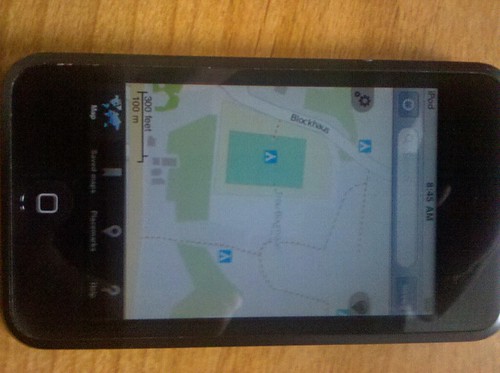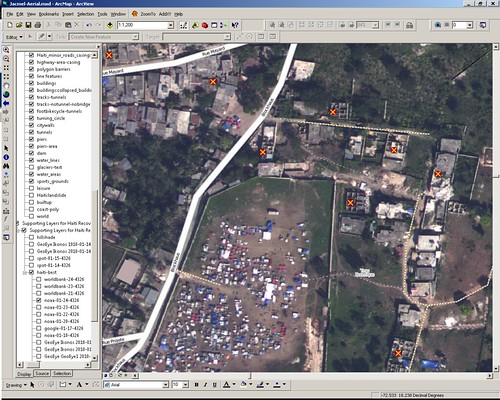
There is a great application call oMaps available in the Apple App Store that allows off-line caching of Open Street Maps. This app is perfect for use by those traveling abroad with prohibitive international data charges. How prohibitive? Well, AT&T is charging $20 per megabyte for rescue and relief teams in Haiti. Classy.
Update 7:05PM GMT - AT&T is waiving international roaming fees for calls, txts & data for customers in Haiti. See att.com/gen/press-room?pid=4800&cdvn=news&newsarticleid=30461. That is classy. Thanks, Meg!
oMaps and Open Street Map to the rescue!
oMaps is available for a mere $2 on the app store, thanks Thomas Bonnin.
Update Feb. 3, 2010 5:54PM GMT - Clarification. This is not sarcasm. This is one amazingly powerful application well worth a modest two bucks. The developer, Thomas Bonnin, when he found out how it was being used in Haiti even offered to comp me some licenses, but in my mind if you make something awesome and charge a fair price you should be remunerated. Now that I know how well it works, I'd willingly pay more.
On first install it caused all my third-party apps to immediately crash on open. I don't use my iTouch much, apparently this is common. Synching my iTouch with iTunes on my computer fixed it as described in this thread discussions.apple.com/thread.jspa?threadID=1850638&st...
Afterward the application is downloaded and installed, here are the steps to save maps for off-line viewing:
- Find your area of interest, you may search but only by major features, e.g. "Haiti"
- Zoom out as far as the application will allow you to and still be able to save (button in upper right). I was able to zoom to an extent that included Jacmel in the south and the pass on Route 4 at Bois Cercueil in the northwest. If you need a larger area than this, then you will want to save separate maps.
- Press Save and name your map.
- Now turn off wifi (and all network connections - if an iPhone put it in airplane mode) and ensure that you are able to zoom in and out of the downloaded map.
The best part, for Haiti at least, is this the absolute best map available. It is current as of the moment I downloaded it as maintained and updated by the Open Street Maps Community. Includes refugee camps, road blocks and collapsed buildings. Better still, the GPS on an iPhone will work without using data charges to update your location on the map (just make sure the 3G networking is turned off or you'll need a relief effort to pay your mobile bill).

A more thorough review of oMaps is available on The Apple Blog.


